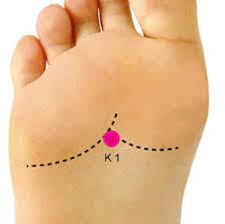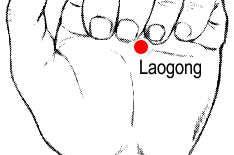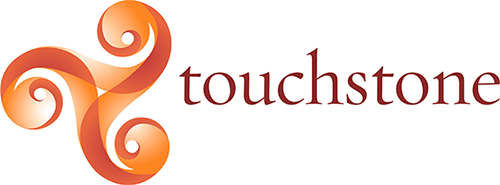
One of the oldest and most famous of all qigong sequences is ‘Ba Duan Jin’, or ‘Eight Pieces of Brocade’, also known as ‘Eight Treasures’. This practice can be traced back to the Song dynasty, which lasted in China from 960-1279CE. During this period, China was noted as the most advanced civilization on earth and responsible for the invention of the mass printing of books, gunpowder, and the compass. General Yue Fei (a Song era military general, poet, and calligrapher) is often noted as the originator of the set of exercises that became Eight Pieces of Brocade as a way to keep his soldiers healthy and ready for battle.
Ba 八 means eight, Duan 段 refers to benefits gained from the practice of the exercises but literally can be translated as holding or carrying something , and Jin 锦 means silk. The image of silk is used often when describing the soft styles of Chinese martial arts and exercises. Culturally, silk was incredibly significant in China and the 3000 year history is literally part of the fabric of what might be considered the longest lasting civilisation in the world.
Whether you are visiting parks across China, or urban locations in New York City or San Francisco, you’ll likely see individuals or groups gathering in the early mornings to practice a variation of this form which has been passed down and woven through the generations like a silken brocade for over 1000 years. The movements are meant to be slow, smooth and flowing like silk, and after completing the practice, you are believed to have the feeling of a smooth, silken sensation throughout the body.
Imagine the fascia – all of your connective tissues within the body – as a smooth silken material that was vibrant and flexible when you were born. But throughout the years, with busy schedules, hurried eating, lack of consistent movement, disrupted sleep and an outward focus on “all the important things” the toll of modern life creates fascia that becomes stressed, thickened, inflamed and inflexible. Imagine a well made bed with a silk sheet, perfectly tucked in and smooth and then compare that visual with a crumpled mess of a sheet after a bad night’s sleep! Yes, that is a good metaphor for what happens to us and all our connected pathways when we are not tending to the garden of our body, which supports our health and well-being.
With 八段锦, Ba Duan Jin’ or ‘Eight Pieces of Brocade,’ you are smoothing, straightening, and repairing your fascia until it resembles a fine piece of silk – thereby allowing your body, mind and spirit to flow unimpeded with good health and vitality.
As is the case with many styles of martial arts and qigong emanating from China’s rich past, The Eight Brocades encompasses theories from Confucian, Buddhist and Taoist thought, is deeply entrenched in Chinese medicine, and its true origins are most likely obscured by the passing of time.
You will notice some slight variation in the stages of the sequence, or the order of the moves, but it’s not worth getting hung up on the differences – you would expect them to appear during the course of a thousand years!
The eight moves of The Eight Brocades each offer particular benefits and are linked to particular meridians of Chinese medicine.
- Two Hands Reach up to Heaven
Without going into depth about Chinese medicine theory, know that the body contains what is referred to as the ‘triple burner’. It is one of the body’s organs in Chinese medicine but can be seen as a metaphorical container for the main organs of the body, consisting of three parts – upper, middle, and lower burners. It balances and circulates Qi throughout the body, regulates the water functions, and facilitates the workings of other organs which it ‘contains’. The first move of Eight Pieces of Brocade balances the triple burner.
- Draw the Bow to Shoot the Eagle
This movement – as those who practice can immediately tell you – is of immense benefit to the strength and flexibility of the lower body, as well as the upper body – from the neck downwards, particularly for expanding the chest cavity . It is also great for coordination and mobility. The movement also regulates Qi in the lungs and liver.
- Separate Heaven and Earth
The Qi of the spleen and stomach is energized in this exercise, aiding with the process of digestion, and the whole of the upper body is stretched – particularly on the side of the ribs and the mobility of the shoulder. The energy pathways of the liver and gallbladder meridians which run along the inside and outside of lines of the body are energized with this move as well.
- Sway the Head and Shake the Tail
The main function of this movement is to bring balance to the fire energy within the body. An excess of heat within the body must be balanced by sinking it down to the kidneys (water) and not allowing an excess of fire to remain in the heart.
On a more physical level, it’s one to do gently if you have lower body or lower back issues but it can bring great relief to stiff or aching backs, gluteals, and hips. It very much feels like an antidote to sitting for too long.
- The Wise Owl Looks Backwards
The twisting nature of this move will benefit the entire body by gently squeezing and massaging the internal organs, building resilience to illness and injury . The posture loosens tension in the eyes, neck, back, hips and helps reverse the effects of sitting or standing for too long in one position.
- Clench the Fists and Gaze Fiercely
Another great move for the strength and flexibility throughout the whole body, particularly the legs. The application and release of tension helps with relaxation. The liver Qi is strengthened, improving the flow of blood throughout the body, as well as increasing the strength of the tendons. The Qi of the liver is also linked with the eyes.
- Bouncing on the Toes
The Du Mai meridian, called “the Sea of Yang” and the root of all yang energy within the body is stimulated in this move. The point known as the ‘Bubbling Spring’ or Kidney 1 point is also massaged by rocking up onto the toes. ‘Bubbling Spring’ is regarded as a root to the earth and is used for calming and grounding the mind and body.

- Two Hands Hold the Feet to Strengthen the Kidneys and Waist
The waist is known as the container of the kidneys. The kidneys store Qi, and are related to the health of the bones and bone marrow, reproduction, and balancing yin and yang within the body. Stretching, massaging, and strengthening the spinal column, the move creates a circuit from the important ‘Lao Gong’ point in the hands (anxiety, inflammation) with the ‘Bubbling Spring’ point on the feet.

Lao Gong, also known as the “Palace of Toil” is the eighth point of the heart master channel. It is stimulated to ease anxiety and clear inflammation. It is located where the tip of your middle finger touches your palm when you make a fist. This is a key point for healing work and qi gong practice, and is stimulated to ease anxiety and clear inflammation.
In terms of Chinese medicine, the qi throughout the entire body has been stimulated and increased, with every organ massaged and strengthened, and every meridian stretched. With regular practice, the stagnant energy which contributes to disease and illness will be unblocked, and you will become more resilient in your health, both mentally and physically.
From a western perspective you might notice how the sequence increases lung capacity, encourages deep breathing, builds strength, flexibility, mobility, coordination, balance, helps relaxation, reduces stress and anxiety, boosts immunity … indeed, the benefits are immense!
On a practical level, you can practice these sequences almost anywhere and it can be performed seated as well as standing. For those who do not have much time, consider that the entire practice encompasses about 20 minutes from beginning to end. What a great investment of time to support your health and well-being!!




